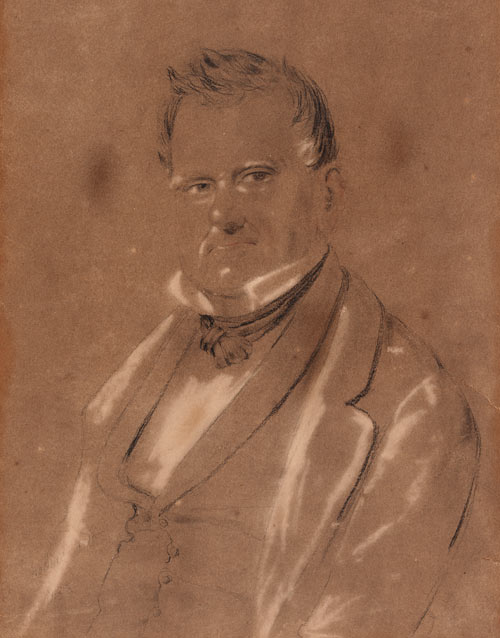Joseph Raphael
 Portrait of Joseph Raphael, ca. 1852,
Portrait of Joseph Raphael, ca. 1852, pastel drawing by Charles Rodius. ML 1438
Joseph Raphael, a hatter by trade, was a Jew from the Spitalfields district of London. On 20 April 1802, Raphael was one of four men tried at the Old Bailey for highway robbery which was a rarity at the time, as most Jews sent out to Australia were convicted for less violent crimes.
In this instance, Raphael was found guilty and sentenced to death but his sentence was later commuted to transportation.
Despatched on the Calcutta in 1803, he became an unwilling participant in the British Government’s first attempt to colonise Port Phillip, now known as Victoria. The colony was established under the leadership of Lieutenant-Governor David Collins, at Sullivan Bay (now part of Sorrento on the Victorian coast) but lack of fresh water and timber led to the eventual abandonment of the settlement. By 1804, the settlers and convicts had been moved to Risdon Cove, Van Diemen's Land.
Joseph Raphael’s conduct as a convict was far from exemplary. Frequently punished for insubordination, Raphael attempted to escape from Van Diemen’s Land in 1807. After being sent to Newcastle (New South Wales) and earning a conditional pardon, Raphael opened a shop at Pitt Street, Sydney, selling food, fabric and tobacco.
'Manchester Arms revived', Sydney Gazette, 24 June 1830; and 'In the matter of Joseph Raphael, an alleged insolvent', Sydney Gazette, 14 December 1830. Printed. RB/F 450.
Raphael owned several Sydney businesses over a thirty-year period. In 1830 he purchased the celebrated Manchester Arms hotel in George Street. In the first Sydney Gazette advertisement from 24 June 1830, Raphael paints an enticing picture of his hotel. Within six months, however, Raphael was declared insolvent. During his time in Sydney, Raphael was rarely out of the courts. Whether suing over property disputes or being charged with assaulting magistrates, Raphael kept Sydney’s barristers busy.
Our portrait by Charles Rodius shows Joseph Raphael aged in his seventies. Raphael died in Sydney on 26 September 1853. A death notice in the Sydney Morning Herald described Raphael as 'one of the oldest colonists, highly esteemed by all that knew him, leaving an affectionate wife and a large circle of friends to lament their loss'. His wife, Ann (nee Clements) died just three months later. Although buried by a Methodist minister, Joseph Raphael remained true to the Jewish faith and it is believed that he contributed towards the building of the York Street Synagogue.

